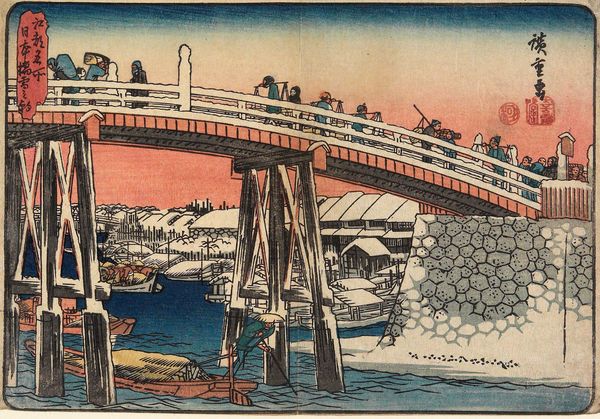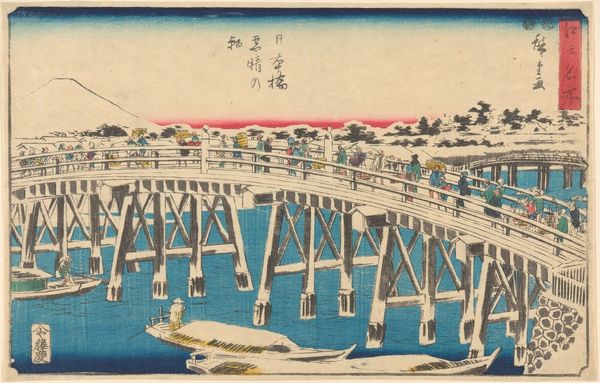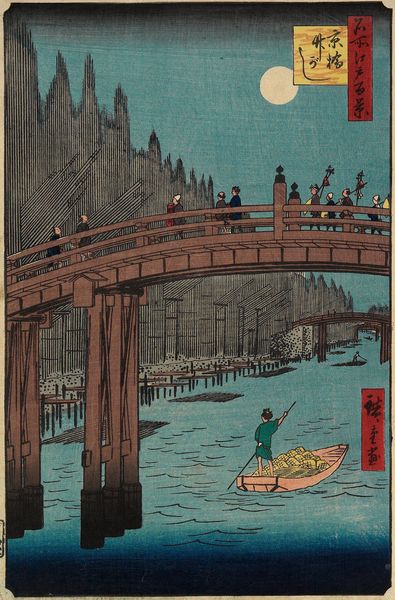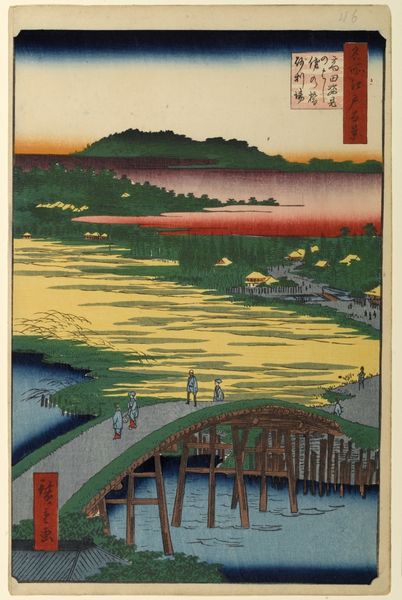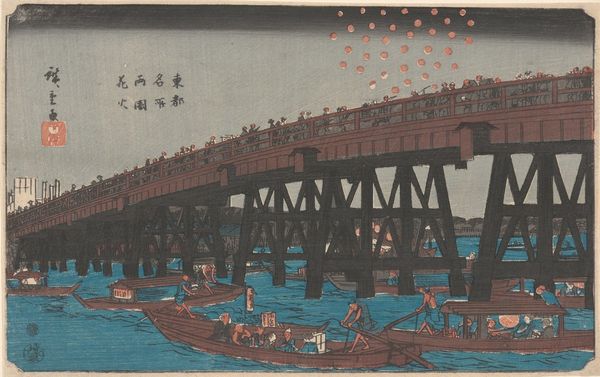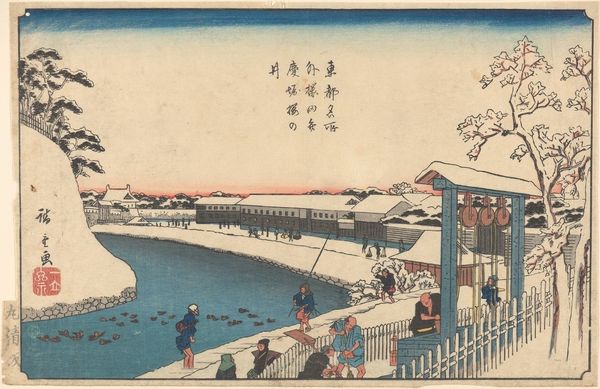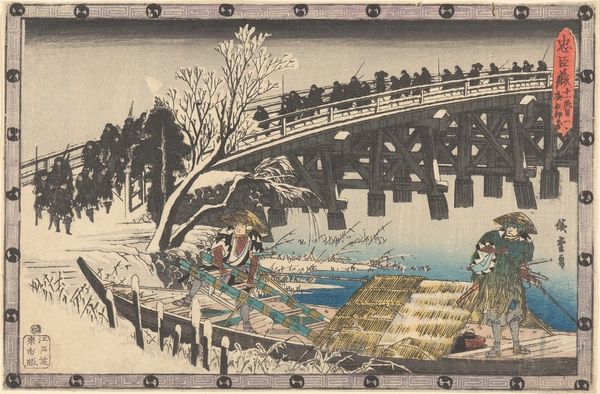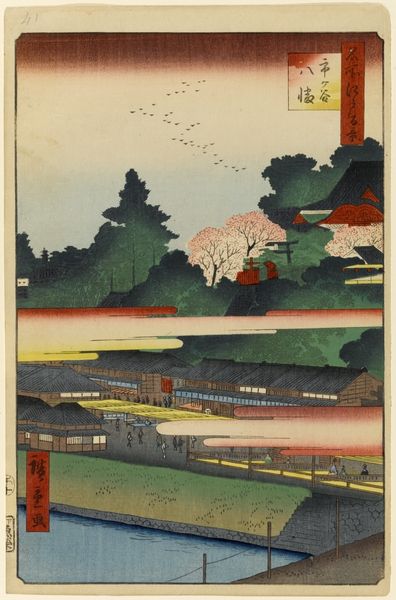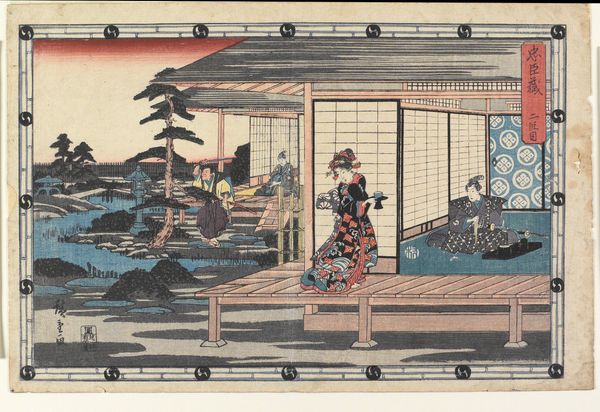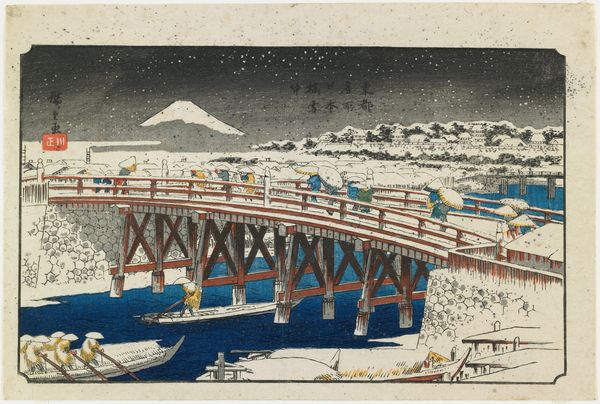
Illustration of the Opening of Azuma Bridge in Tokyo (Tokyo meisho no uchi azuma bashi shinchiku no zu) 1887
0:00
0:00
Dimensions: 14 1/8 x 28 1/2 in. (35.9 x 72.4 cm)
Copyright: Public Domain
Editor: Here we have Inoue Yasuji's "Illustration of the Opening of Azuma Bridge in Tokyo," a print from 1887. What strikes me immediately is the way the traditional style blends with this very modern, almost industrial, subject. It's quite beautiful, actually. How do you interpret this intersection of old and new? Curator: It's a fantastic question! The Azuma Bridge, newly constructed at the time, becomes a potent symbol. Japan was rapidly modernizing, embracing Western technology, but doing so within existing social structures. Consider how the figures on the bridge are rendered – there's a conscious depiction of different social classes, observing this new feat of engineering together. What do you think that juxtaposition implies? Editor: Hmm, perhaps it speaks to a shared sense of progress, but maybe with a hint of social stratification still apparent. It's almost like the bridge becomes a stage for observing Japanese society at this pivotal moment. Curator: Precisely! And the *ukiyo-e* tradition reinforces this public role of art. Prints like these weren’t just decorative; they circulated widely, shaping public opinion and national identity. The red sky, for instance, that bold color, served to promote patriotic sentiments during a period of significant sociopolitical changes. The museum or gallery today, of course, has a vastly different relationship with its audience, and, arguably, its culture. Editor: So, the print isn't just a picture of a bridge, it’s a snapshot of a society in transition. That gives it a whole new layer of meaning! Curator: Exactly. Looking at it today encourages us to question whose stories are being told and how. The bridge literally connects places, but it also represents the connection - and sometimes the tension - between tradition and progress. Editor: I’ll definitely think about this piece differently now. The bridge becomes more than just architecture. Curator: And art institutions, then, become places for engaging these rich visual debates. Thank you for your perspective.
Comments
No comments
Be the first to comment and join the conversation on the ultimate creative platform.

